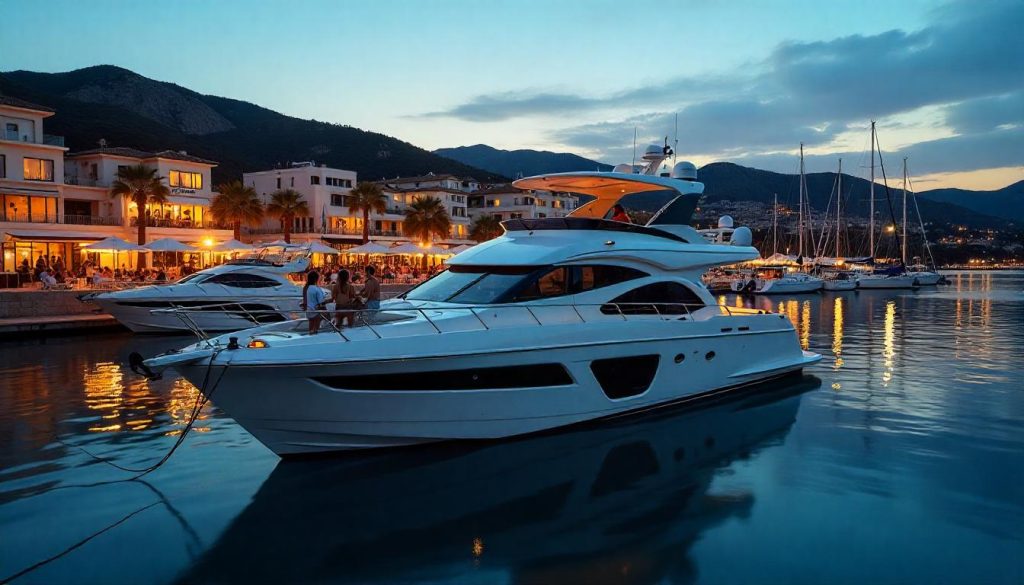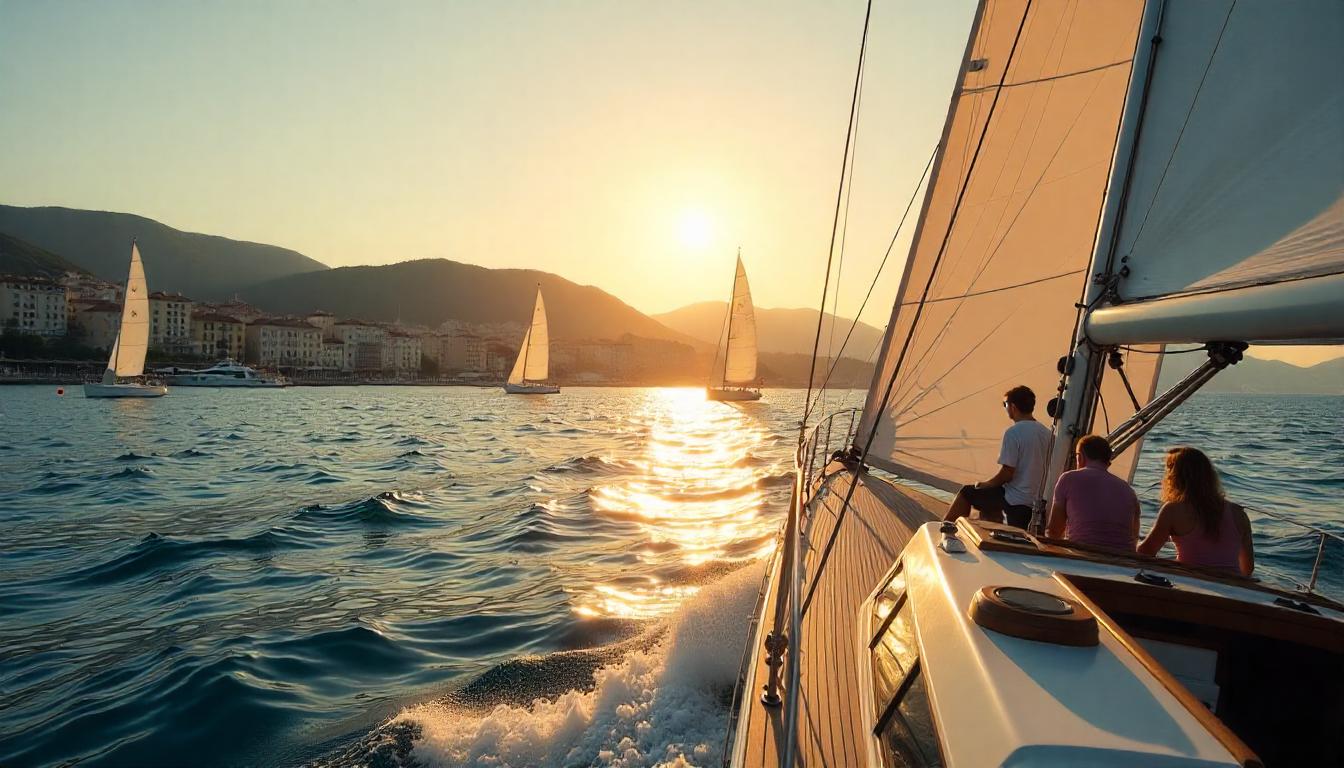Spain’s 8,000 km of coastline, stretching from the Mediterranean to the Atlantic, has fostered a rich Spain yachting culture that blends centuries-old maritime traditions with modern trends, making it a top destination for sailors worldwide. From the historic regattas of San Sebastián to the luxury yacht charters of the Balearic Islands, Spain offers a unique mix of heritage and innovation for yachters. In this article, we’ll dive into the traditions and trends shaping Spain yachting culture, exploring its history, events, and modern developments as of April 2025.
The Roots of Spain Yachting Culture
Spain yachting culture has deep historical roots, tied to the country’s maritime legacy as a seafaring nation. For starters, Spain’s history as a naval power during the Age of Exploration in the 15th and 16th centuries laid the foundation for its boating traditions—ports like Cádiz were key hubs for explorers like Christopher Columbus. Moreover, traditional wooden boats, such as the llaut in the Balearics, are still crafted by artisans today, costing $10,000 for a small vessel, and used in local festivals. Consequently, Spain’s maritime past continues to influence its yachting culture.
Traditional Boats and Festivals
Traditional boats play a big role in Spain’s coastal communities. For instance, in Menorca, the llaut—a small, wooden fishing boat with a lateen sail—is a symbol of the island’s heritage, often seen during the Sant Joan festival in Ciutadella, where boats parade in the harbor for free public viewing. Additionally, Galicia’s dornas, small rowing boats, are used in the Fiesta de la Virgen del Carmen, a July festival where fishermen honor the patron saint of the sea with a maritime procession—events are free to watch. This connection to traditional vessels keeps Spain yachting culture grounded in history.
Historic Regattas in Spain Yachting Culture
Regattas are a cornerstone of Spain yachting culture, celebrating the country’s competitive sailing spirit. The Regatta de la Concha in San Sebastián, held every September, is one of the oldest, dating back to 1879. It features traineras—traditional rowing boats—racing in the Bay of La Concha, with free viewing from the beach. Also, the Copa del Rey in Palma de Mallorca, a prestigious sailing race since 1982, attracts international teams, with entry fees starting at $500 per boat, and spectators can watch from the shore for free.
Celebrating Regattas by Yacht
Regattas offer a unique yachting experience. For example, during the Regatta de la Concha, yachters can anchor in the Bay of La Concha—free to anchor—and watch the races from their deck, with the city’s skyline as a backdrop. Next, the Copa del Rey in Palma provides a more upscale vibe—moor at Real Club Náutico de Palma for $80 per night and join the post-race parties, where a cocktail costs $10. Transitioning to culture, these events showcase Spain’s competitive sailing heritage while offering a festive atmosphere for yachters.
The Role of Marinas in Spain Yachting Culture
Marinas are central to Spain yachting culture, serving as hubs for both traditional and modern yachting activities. Historic marinas like Real Club Náutico de Barcelona, founded in 1876, host sailing schools where a beginner’s course costs $300 for a week, preserving Spain’s sailing traditions. Meanwhile, modern marinas like Puerto Banús in Marbella cater to luxury yachters, with mooring fees at $100 per night for a 40-foot yacht, and nearby boutiques selling designer gear—think a nautical jacket for $150.
Marinas as Cultural Hubs
Marinas blend tradition with modernity. For instance, Real Club Náutico de Barcelona organizes traditional boat parades during La Mercè festival in September, a free event with fireworks over the harbor. In contrast, Puerto Banús hosts yacht parties during the Marbella Luxury Weekend in June, where entry to events costs $50 per person, and you might spot a celebrity. Transitioning to community, marinas often have sailing clubs that welcome visitors—membership fees start at $200 per year, offering access to regattas and social events. Thus, marinas are vital to Spain yachting culture.
Modern Trends in Spain Yachting Culture
Spain yachting culture has evolved with modern trends, reflecting global shifts in sailing preferences. One major trend is the rise of eco-friendly yachting—hybrid yachts, like the Sunreef 60 E, are gaining popularity in the Balearics, costing $30,000 per week to charter, with solar panels reducing fuel use by 30%. Additionally, luxury charters are booming—Mallorca saw a 15% increase in yacht charters in 2024, with a 50-foot catamaran costing $10,000 per week, often including a crew. Also, digital navigation tools, like the Navionics app, costing $50 per year, are now standard for yachters.
Eco-Friendly Yachting in Spain
Eco-friendly yachting is reshaping Spain’s sailing scene. For example, in Menorca, a UNESCO Biosphere Reserve, marinas like Port de Mahón encourage the use of electric tenders—rentals cost $100 per day, and they produce zero emissions. Next, the Balearic government has introduced mooring buoys in protected areas like Cabrera National Park to prevent anchor damage to seagrass—buoys cost $20 per night. Transitioning to awareness, many charter companies now offer “green sailing” packages, including tips on reducing waste, for an extra $50 per trip. Therefore, sustainability is a growing focus in Spain yachting culture.

Luxury and Lifestyle in Spain Yachting Culture
Luxury yachting has become a defining trend in Spain yachting culture, especially in destinations like Ibiza and Marbella. High-end charters, such as a 60-foot motor yacht in Ibiza, cost $20,000 per week and come with amenities like jet skis, which cost $200 per day to rent. Moreover, marinas like Marina Ibiza cater to this crowd, with mooring fees at $90 per night and nearby clubs like Pacha, where entry costs $50 per person. Also, yacht parties are a staple—Puerto Banús hosts events with live DJs, where a bottle of champagne costs $150.
Experiencing Luxury Yachting
Luxury yachting offers a glamorous experience. For instance, in Ibiza, you can sail to Formentera’s Playa de Ses Illetes, anchor for free, and host a private party on your yacht—catering from a local chef costs $50 per person. Next, in Marbella, moor at Puerto Banús and visit Ocean Club, a beach club where a day pass costs $40 per person, and you can sip cocktails by the pool. Transitioning to relaxation, these charters often include a crew, ensuring a stress-free trip—skippers cost $200 per day. Thus, luxury yachting adds a lavish layer to Spain yachting culture.
Family-Friendly Yachting in Spain Yachting Culture
Family-friendly yachting is another growing trend in Spain yachting culture, catering to sailors with children. Charters in Mallorca, like a 40-foot catamaran for $7,000 per week, offer spacious decks and shallow-draft designs, perfect for anchoring near family-friendly beaches like Playa de Muro. Additionally, marinas like Port d’Alcúdia provide kids’ sailing programs—a week-long course costs $250 per child, teaching basic skills. Also, many beaches, such as Cala Galdana in Menorca, have lifeguards and shallow waters, ideal for safe swimming.
Family Activities by Yacht
Families can enjoy a range of activities. For example, anchor off Cala Galdana and swim in the 24°C waters—visibility reaches 15 meters, great for snorkeling with kids, and rentals cost $15 per day. Next, sail to Alcúdia and visit the S’Albufera Natural Park, a 10-minute dinghy ride, for a free hike to spot birds like flamingos. Transitioning to dining, cook a family meal onboard with local ingredients—fresh fish from Alcúdia’s market costs $10 per kg. Therefore, family-friendly yachting ensures a fun and safe experience for all ages.
Practical Tips for Exploring Spain Yachting Culture
A few tips can enhance your yachting experience. First, plan around festivals—the Regatta de la Concha in September offers a cultural highlight, but anchor early to secure a spot in the Bay of La Concha. Next, bring eco-friendly products—biodegradable sunscreen, costing $15, helps protect Spain’s marine ecosystems, especially in protected areas like Cabrera. Also, learn basic Spanish phrases—terms like “amarre” (mooring) can help when docking at smaller marinas like Port de Ciutadella.
Načasovanie plavby na jachte
Timing can elevate your experience. For instance, visit Palma in August for the Copa del Rey regatta—temperatures are warm at 28°C, and the event adds excitement. Transitioning to seasons, May in Menorca offers mild 24°C weather and fewer crowds, ideal for exploring traditional boat festivals. Therefore, timing your trip ensures you experience the best of Spain yachting culture.
The Cost of Experiencing Spain Yachting Culture
A 7-day yachting trip for four people includes a yacht charter at $3,500, or $875 per person. Mooring fees average $80 per night, totaling $560 for seven nights, though anchoring off Formentera saves costs. Fuel for 100 nautical miles costs $200, and meals at coastal restaurants average $15 per person daily, or $420 for four. Activities like regatta viewing (free) and museum visits ($5) total $20 per person. Total: about $4,700 for four, or $1,175 per person.
Tipy na úsporu rozpočtu
Save by anchoring in free spots—staying off Playa de Ses Illetes saves $80 per night compared to Marina Ibiza. For example, a free anchorage in the Bay of La Concha avoids fees entirely. Also, cook onboard using local markets—ingredients for a seafood paella in Palma cost $15 for four, versus $60 at a restaurant. Transitioning to charters, book early to secure discounts, often 10% off. Thus, smart budgeting keeps your trip affordable.
Challenges of Spain Yachting Culture
Yachting in Spain can present challenges. First, peak season (July-August) means crowded marinas, especially in Ibiza—Marina Ibiza can book out months in advance. Additionally, the Tramontana wind in the Balearics can reach 20 knots, requiring you to anchor in sheltered spots like Cala Saona. Also, navigating traditional festivals can be tricky—some ports close for events like the Fiesta de la Virgen del Carmen, so check schedules. However, these issues can be managed.
Prekonávanie výziev pri jachtingu
Sail in May or September to avoid crowds—marinas like Port de Mahón are quieter, and anchorages are easier to find. For weather, monitor apps like Windy, and have a flexible itinerary—your captain can suggest sheltered coves if winds pick up. For festivals, plan ahead—check port schedules online to avoid closures during events. Transitioning to solutions, you can enjoy a smooth yachting trip. Thus, preparation ensures a stress-free experience.
Why Explore Spain Yachting Culture?
Spain yachting culture offers a rich blend of traditions and trends, from historic regattas to eco-friendly charters, with each aspect reflecting the country’s deep connection to the sea. Whether you’re watching a traditional boat parade in Menorca or chartering a luxury yacht in Marbella, Spain delivers a diverse sailing experience. For a cultural and modern yachting adventure, this is the place. Therefore, Spain yachting culture is a sailor’s delight.
A Yachting Journey in Spain
Every experience creates lasting memories. For instance, watching the Regatta de la Concha feels like stepping back in time. Or, sailing a hybrid yacht in the Balearics offers a glimpse of yachting’s future. This variety ensures a spectacular trip. Thus, Spain yachting culture is an adventure you’ll cherish.
Final Thoughts on Spain Yachting Culture
Spain yachting culture lets you experience the country’s maritime heritage and modern innovations, from traditional festivals to luxury charters, with every stop offering a new perspective. With careful planning, a good itinerary, and a love for the sea, you’ll create a sailing trip that’s both enriching and exciting. So, set sail, embrace the traditions, and let Spain’s coast captivate you—one wave at a time.


